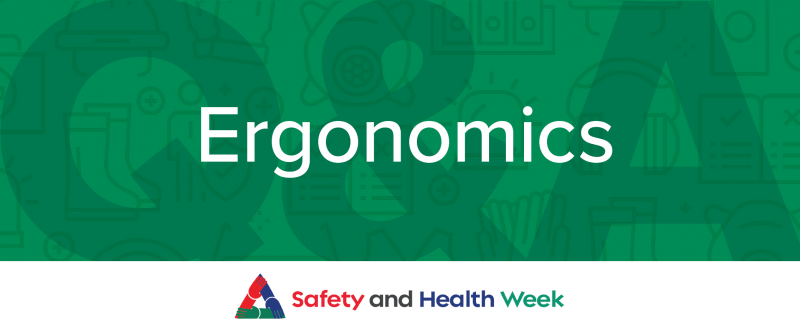About
About the Alliance
News and Events
Membership
Membership Types
Member Highlights
Services
Safety Assessments + Consultations
Advisor Services
Leadership and Psychological Safety Services
Training
COURSE CATALOG AND CLASSES
CONFERENCES & WORKSHOPS
Resources
By Type
OHS Competency Tools and Framework
COR Certification | OSSE
Getting Certified
COR / OSSE Resources
Recognition & Awards
Navigation
Member Highlights:
Safety Assessments + Consultations: Air Quality Assessment, Combustible Dust and Combustion Risk Assessments, Confined Spaces Assessment, Critical Incident Response Services, Ergonomics, Machine Safeguarding Assessment, Noise Hazards | Surveys and Testing Services
Advisor Services: Safety Needs Analysis | GAP Analysis, Safety Program Support (SPS) | Safety Compliance Support (SCS)
Leadership and Psychological Safety Services: Psychological Safety Training and Coaching, Leadership Training and Coaching, Respectful Workplace Support
COURSE CATALOG AND CLASSES: All Training Topics, Upcoming Classes, eLearning - Online Safety Training
By Type: Checklists, Guidebooks, Presentations, Quick Reference Cards, Safety Awareness Posters, Safety Videos, Templates, Toolbox Talks, Webinars
OHS Competency Tools and Framework:
Getting Certified: Steps to COR / OSSE Certification, COR / OSSE for Small Business, COR / OSSE Business Referral Program, Certified COR / OSSE External Auditors
12
Months
of Safety
of Safety
October 2025
Ergonomics and Human Factors
Ergonomics and human factors are the scientific disciplines focused on designing and arranging environments, products, and systems to fit the capabilities and needs of people. Ergonomic design optimizes well-being, comfort, and performance by reducing physical and mental stress. By considering factors such as posture, movement, and the interaction between humans and their surroundings, ergonomics enhances efficiency, safety, and overall worker wellbeing. It's a key factor in the prevention of workplace injuries and chronic pain.
Get Help
Did you know we offer office and industrial ergonomic assessments, advice, and specialized training with a qualified ergonomist?
Basic Training
Course
Ergonomics is concerned with the “fit” between the user, equipment and environment. Ergonomics takes into account users’ capabilities and limitations to ensure tasks, functions, information and the environment suit each user. This course provides information to managers, supervisors and employees on proper ergonomic design to prevent repetitive strain injuries and other musculoskeletal disorders.
Course
Ergonomic design is necessary to prevent repetitive strain injuries and other musculoskeletal disorders, which can develop over time and can lead to long-term disability. This course builds on the fundamentals of Ergonomics and assists managers, supervisors, and employees in implementing a musculoskeletal injuries/disorder reduction program.
Ergonomics and Human FactorsHealth and Safety Resources and Tools
Checklist
If employees work from home, it is the employer’s responsibility to ensure their health and safety.
Service
Ergonomic and Human Factors Assessments Industrial (plant) and office ergonomics for musculoskeletal injury prevention Ask an ergonomist! Alliance members have access to specialized safety support—including office and industrial ergonomics assessments, advice, and training. If an uncomfortable or awkward position is required to do the job, workers are at risk of developing various musculoskeletal injuries (MSIs) […]
Toolbox Talk
Ergonomics works to reduce the risk of musculoskeletal injuries (MSI), including damage to muscles, bones or joints through designed workplaces, equipment, systems, and work. On average, MSI claims are 34% of all WorkSafeBC claims. From 2011 to 2020, that was an average of 17,891 claims per year.
Quick Reference Card
Has been present ever since human beings began interacting with the environment. Ergonomics actually emerged as a scientific discipline in the 1940s due to the technological advances of World War II
Poster tips for stretches that can be done at any workstation throughout during periodic wellness breaks to counter stiffness from static work and potentially limit risk of sprains or strains in more active jobs.
Toolbox Talk
Fatigue is feeling tired weary from sleep, mental or physical work, or stress. Boring repetitive tasks can increase feelings of fatigue. Fatigue is either acute or chronic.
Conference Session
Learn from two seasoned ergonomics experts in this candid, practical conversation about what really works when it comes to preventing musculoskeletal injuries (MSIs) in the workplace. This discussion will focus around three topics: engaging workers in your ergonomics program, practical strategies for controlling risks, and designing risk out of your operations. With a focus on […]
Toolbox Talk
We lift, handle, and carry objects as part of work and our daily living. There is no legal threshold limiting what weight you can lift. At what point have you decided that lifting a specific item by yourself would NOT be a good idea? Have you ever been taught the right way to lift a load? Do you know the dos and don’ts for lifting?
Toolbox Talk
Manual materials handling is handling items by lifting, lowering, pushing, pulling, carrying, holding, or restraining. It is the most common cause of occupational fatigue and lower back injuries. Three quarters of Canadians whose job includes manual handling suffer from back injury at some point. Many are unable to return to their jobs and some are […]
Guidebook
The Manufacturing Safety Alliance of BC is proud to introduce the MSI Prevention Guide, a source of guidance to an organization in implementing an ergonomics program at their workplace.
Toolbox Talk
A musculoskeletal injury (MSI) is an injury or disorder of the muscles, tendons, ligaments, joints, nerves, blood vessels or related soft tissue, including a sprain, strain, and inflammation, which may be caused or aggravated by work. Well-known MSIs include sprains and strains, carpal tunnel syndrome, bursitis, trigger finger, white finger diseases, and epicondylitis (tennis elbow).
The goal of this self-assessment checklist is to help you to set up your office optimally for your self-productivity. This checklist is for reference only and does not replace an ergonomics workstation assessment carried out by a professional ergonomist.
Conference Session
We are not invincible. But sometimes we treat our bodies as though we think we are. The incremental chances we take every day—every awkward position, improper lift, and repetitive motion—can add up to a lifetime of pain. Identifying risks is important. But beyond hazard ID, this workshop teaches practical controls that can prevent MSI injuries. […]
News & Blog Articles
Who does this impact? WorkSafeBC has announced that in 2024, as part of their Planned Inspections Initiative, they will be focusing inspections on the following manufacturing classification units (CUs). Historically, workers in these CUs are at higher risk for serious injury....
3 safety tips: Ergonomics best practices for manufacturing
February 18, 2020
Ergonomics goes beyond stretching programs or choosing the right chair. It is an important strategic consideration. In the manufacturing sector, employees are especially vulnerable to developing musculoskeletal injuries (MSIs) due to several factors specific to their occupations. Risk factors such...
About MSABC
Board & Governance
Contact Us






